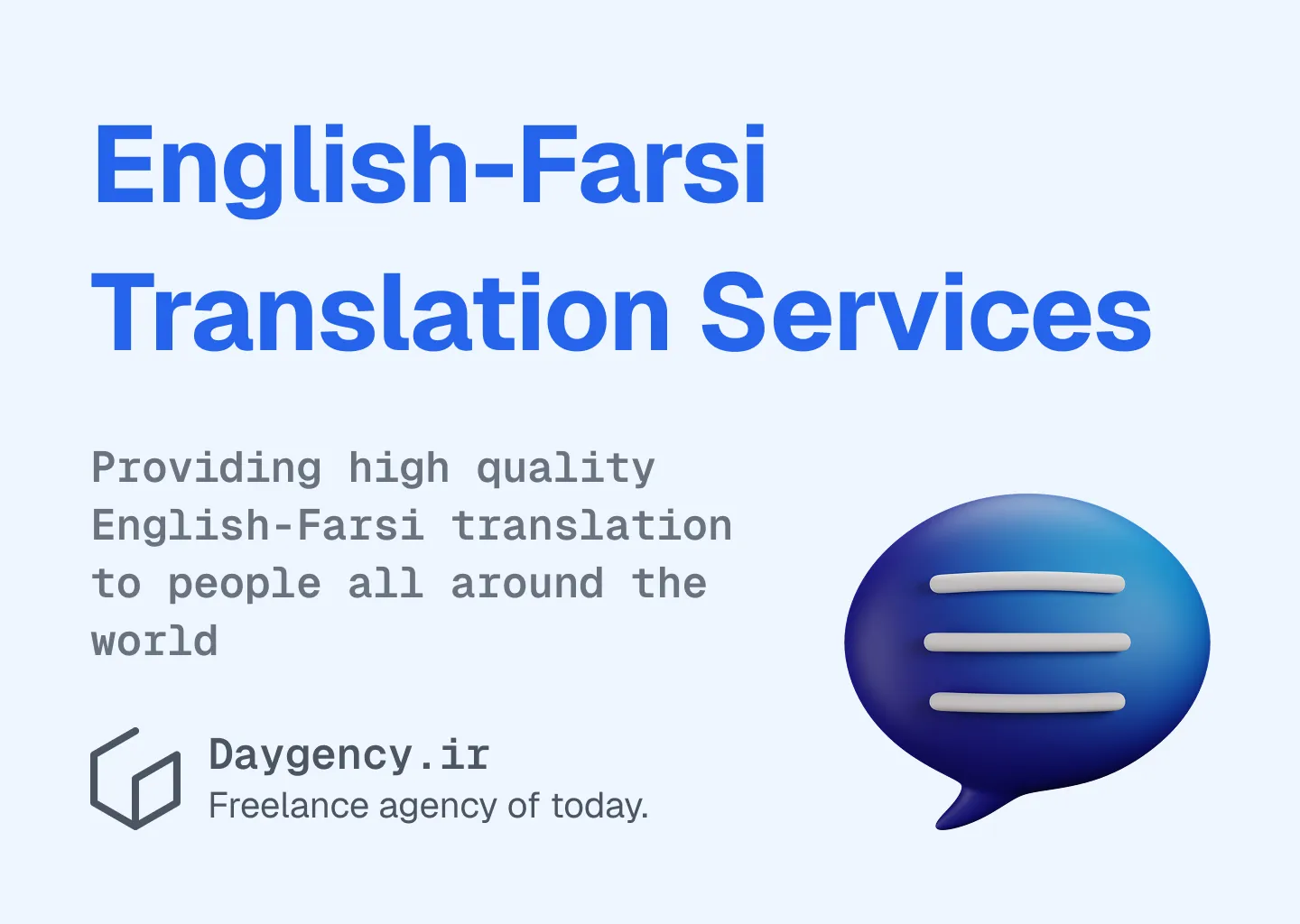Accurate Farsi-English translation is essential for effective communication in business, legal, academic, and personal contexts. However, translating between these two languages presents unique challenges due to their distinct grammar, syntax, and cultural differences. Even experienced translators can fall into common traps, which can lead to miscommunication, loss of meaning, or even costly errors.
In this article, we’ll highlight some of the most frequent mistakes in Farsi-English translation and provide tips on how to avoid them.
1. Literal Translations That Miss the Meaning
One of the most frequent mistakes is translating words and phrases literally without considering their context or cultural meaning.
Example:
- Farsi: دست شما درد نکند
- Literal translation: "May your hand not hurt."
- Actual meaning: "Thank you."In this case, a literal translation would confuse English speakers, while the culturally appropriate equivalent clearly conveys gratitude.
How to Avoid It:
- Understand idiomatic expressions in both languages and translate them contextually, not word-for-word.
- When dealing with proverbs or sayings, use equivalent expressions in the target language rather than direct translations.
Example:
- Farsi: کار از محکمکاری عیب نمیکند
- Literal: "It doesn’t hurt to be thorough."
- Culturally accurate English equivalent: "Better safe than sorry."2. Misuse of Verb Tenses
Farsi and English have different verb structures, and mismatching tenses is a common error.
- Farsi uses more flexible tense structures, while English often requires precise tense usage.
- Translating Farsi past continuous or subjunctive forms into simple past can cause inaccuracies.
Example:
- Farsi: دیروز داشتم کتاب میخواندم
- Incorrect translation: "I was read a book yesterday."
- Correct translation: "I was reading a book yesterday."How to Avoid It:
- Pay special attention to verb conjugations and tenses when translating.
- Use consistent tense forms in English to maintain clarity.
- When in doubt, read the sentence aloud in English to catch awkward or incorrect phrasing.
3. Inconsistent Pronoun Usage
Farsi and English handle pronouns differently, which can lead to confusion when translating.
- Farsi uses gender-neutral pronouns (او) for both “he” and “she,” but English requires gender-specific pronouns.
- This can cause ambiguity or incorrect gender assignment.
Example:
- Farsi: او مدیر موفقی است
- Incorrect translation: "It is a successful manager."
- Correct translation: "He/She is a successful manager."How to Avoid It:
- Clarify the gender by using context clues or consulting the client when translating.
- If the gender is unknown, use “they” or rewrite the sentence to avoid the pronoun altogether.
Example:
- Farsi: او پزشک خوبی است
- Translation: "They are a good doctor."
- Alternative: "The doctor is very skilled."4. Overuse of Passive Voice
Farsi tends to use the passive voice more frequently than English, but direct translation into English makes the sentence sound awkward or unclear.
- In English, active voice is preferred for clearer, more natural phrasing.
Example:
- Farsi: نامه توسط مدیر امضا شد
- Incorrect translation: "The letter was signed by the manager."
- Better translation: "The manager signed the letter."How to Avoid It:
- When translating into English, opt for the active voice whenever possible.
- Read the sentence aloud—if it sounds clunky or unnatural, rewrite it in active form.
5. Neglecting Cultural Context
Cultural differences can lead to inaccurate or inappropriate translations. Certain Farsi expressions, idioms, or metaphors may carry connotations that are unfamiliar or even offensive in English.
Example:
- Farsi: سرت به سنگ بخورد (an expression expressing frustration or disappointment).
- Literal translation: "May your head hit a rock."
- Culturally appropriate English equivalent: "I hope you learn your lesson."How to Avoid It:
- Familiarize yourself with both cultures to understand connotations and implied meanings.
- Use culturally equivalent expressions rather than direct translations.
- When dealing with sensitive topics, consider how different audiences interpret specific terms or phrases.
6. Incorrect Punctuation & Sentence Structure
Farsi and English have different punctuation rules, which can lead to formatting mistakes.
- Farsi uses an Arabic comma (،), which should be replaced with the standard comma (,) in English.
- Farsi uses right-to-left script, while English uses left-to-right formatting, which can cause issues in mixed-language documents.
Example:
- Farsi: من امروز پرتقال، سیب، و موز خریدم.
- Incorrect translation: "I bought Oranges، Apples، and Bananas today."
- Correct translation: "I bought Oranges, Apples, and Bananas."How to Avoid It:
- When translating to English, apply standard English punctuation rules.
- Proofread the translated text carefully to catch any inconsistencies in formatting.
7. Misplacing Modifiers and Adjectives
Farsi uses a different adjective order than English, which can lead to confusing or awkward sentences.
- In Farsi, the adjective comes after the noun, whereas in English, it comes before the noun.
- Incorrectly applying the Farsi order in English makes sentences sound unnatural.
Example:
- Farsi: خانه بزرگ
- Incorrect translation: "House big"
- Correct translation: "Big house"How to Avoid It:
- When translating, rearrange the sentence structure to fit English grammar rules.
- Always double-check adjective and noun placement to ensure fluency.
8. Ignoring Formality & Register Differences
Farsi distinguishes between formal and informal speech, while English relies more on tone and context.
- Translating informal Farsi speech too formally can make content sound stiff.
- Conversely, overly casual English translations can sound unprofessional.
Example:
- Farsi: لطفاً مدارک را ارسال کنید
- Incorrect translation: "Please send the documents, mate." (too casual)
- Correct translation: "Please send the documents." (neutral and professional)How to Avoid It:
- Pay attention to the tone and context of the original text.
- Use appropriate formal or informal language in English to match the Farsi register.
Key Takeaways for Accurate Farsi-English Translation
- Prioritize contextual accuracy over literal translation.
- Use active voice in English for clearer sentences.
- Localize idioms and expressions to fit the target culture.
- Double-check grammar, tenses, and sentence structure.
- Proofread carefully for consistency and readability.
Professional Translation Services

Need professional Farsi-English translation services? Our agency offers accurate, culturally adapted translations for businesses, researchers, and individuals.
Contact us today for precise, reliable translation services!
